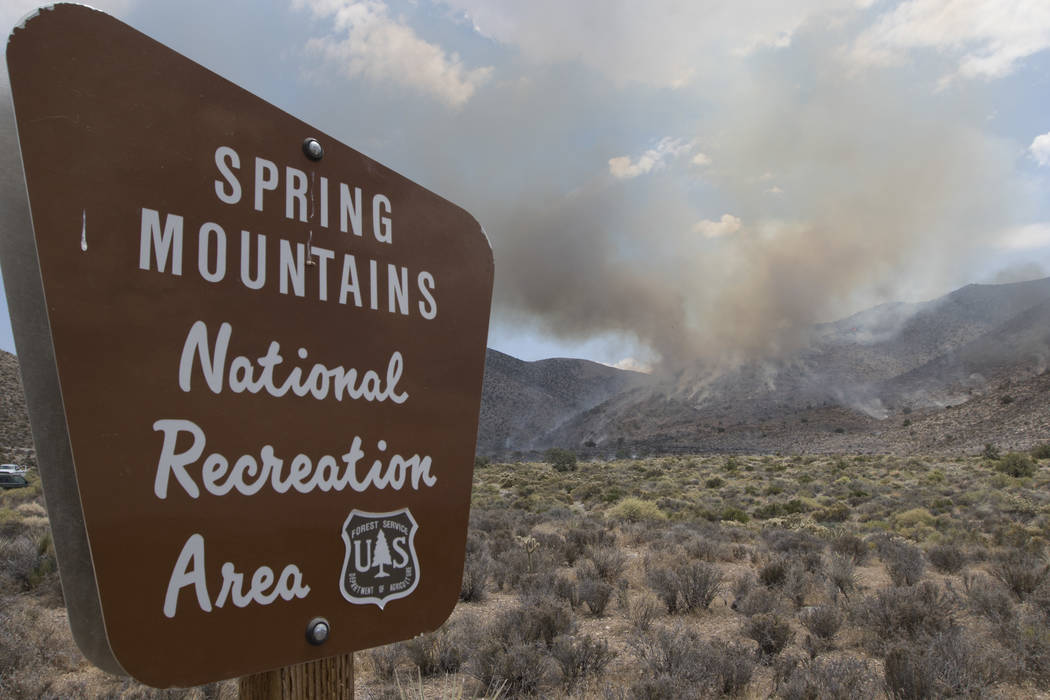Jim Hartman: a fresh approach to the prevention of wildfires
While climatological factors like drought, heat and wind are primary factors in the wildfires currently raging throughout Northern California, Interior Secretary Ryan Zinke last month took important steps to begin reversing nearly three decades of federal neglect in prevention of forest wildfires.
Zinke issued a memo instructing his land managers and park superintendents to use their “full authority” to begin clearing the dead and dying trees and vegetation that clog federal lands and are a tinderbox for Western wildfires. His memo notes that the Interior Department will now “proactively work to prevent forest fires through aggressive and scientific fuels reduction management.”
Zinke is a break from recent Interior Department secretaries. He’s the first Montana native in a presidential cabinet—the son of a plumber, Eagle Scout, college football player, geologist, and the first Navy SEAL elected to Congress. He arrived for his first day of work as interior secretary on horseback.
It was clear to Zinke that past Forest Service policies have been a cause of fuels buildup, highlighted in the 1990’s by policies that greatly reduced logging and road building in federal forests. In turn, this permitted disease and insect infestations to increase unchecked and the number of wildfires to proliferate.
Closer to home, severe drought conditions in California significantly weakened many trees and provided the perfect habitat for bark beetles in the Sierra Nevada. The U.S. Forest Service estimates at least 12.5 million trees have been killed off by beetles in California national forests since the drought began five years ago. The Forest Service in a May, 2016 survey increased the Sierra Nevada dead tree count to 66 million.
Even before losses are calculated on current Northern California wildfires, the number and intensity of Western megafires have been growing, with more than 48,000 wildfires torching 8.3 million acres so far this year.
Bigger and more intense fire seasons now routinely destroy thousands of homes, and more than 450 firefighters have been killed on duty since 1990. Before 1990, the Forest Service spent 16 percent of its annual budget fighting fires already underway. In 2015, it spent more than 50 percent of its budget on underway fires for the first time in its history. These rising costs required the Forest Service to take money away from programs to prevent fires through better forest restoration and management.
Beyond Zinke’s memo, Congress will need to pass legislation to make it easier to thin excess timber out of forests and to salvage fire-killed timber while it still has value. Congressional reform should also include changes to the environmental review process in the National Environmental Policy Act and reducing frivolous litigation brought under the often misused Equal Access to Justice Act.
Forest cleanup has become a local, bipartisan cause in the West, as state officials, landowners and others coalesce for increased debris removal and forest thinning. Opposition will continue from the Sierra Club and other environmental groups who see wildfires as necessary. “Western forests need fire like rainforests need rain,” said Aaron Teasdale, a writer for Sierra magazine.
Still, frustration with the “let it burn” approach of environmental activists causes many to welcome long overdue Secretary Zinke’s more aggressive directive on forest management.
U.S. Rep. Bruce Westerman, R-Arkansas, the only registered forester in Congress, praised the Zinke memo, calling it “an important step forward in our fight to turn unhealthy, overgrown, and infested forests into thriving, healthy ecosystems.”
The Republican majority in Congress has a chance to build bipartisan coalitions to better manage federal lands and reduce the fire damage that scars the West each year.
Jim Hartman is an attorney residing in Genoa, Nevada.












